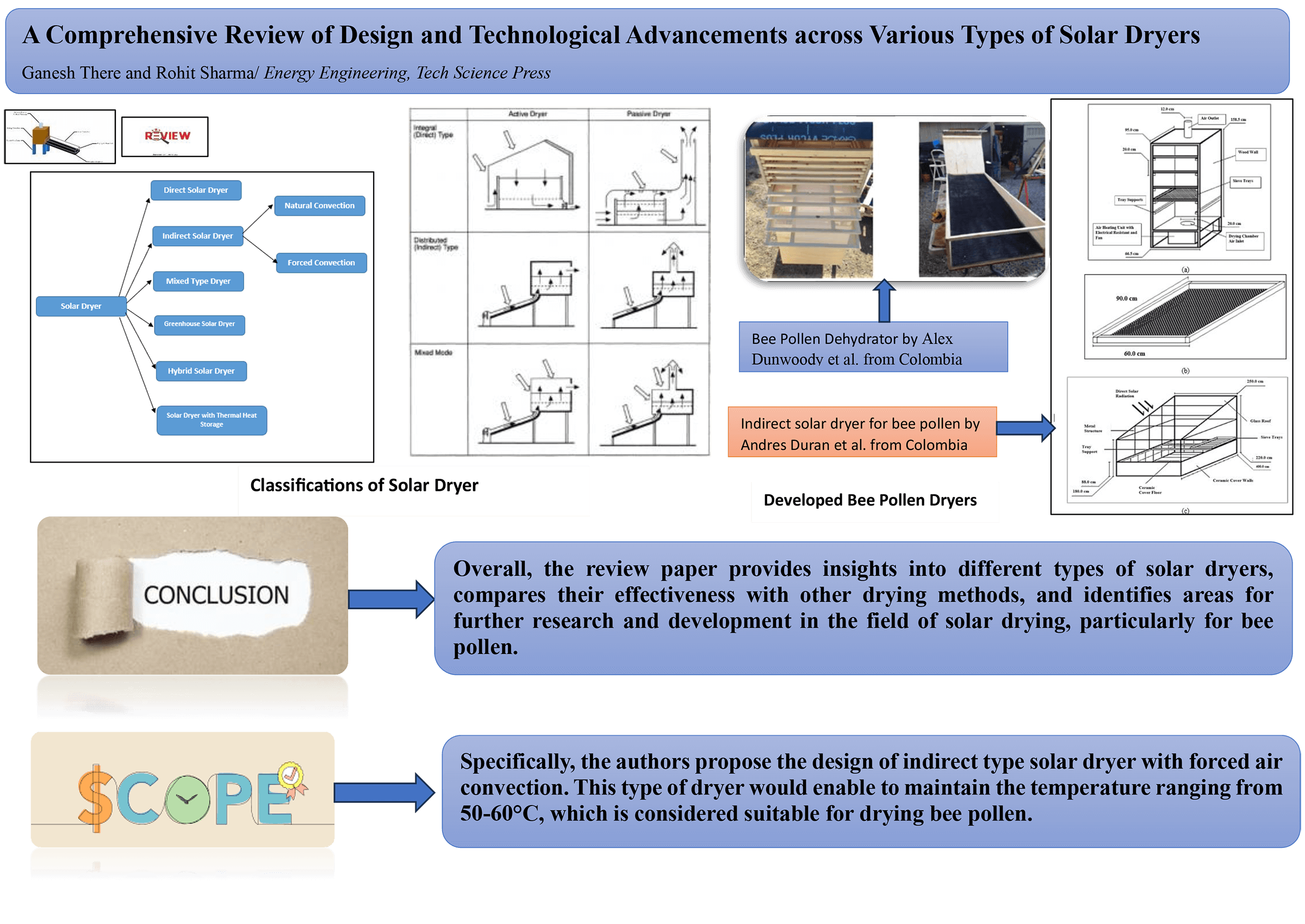 Open Access
Open Access
REVIEW
A Comprehensive Review of Design and Technological Advancements across Various Types of Solar Dryers
School of Mechanical Engineering, VIT Bhopal University, Sehore, 466114, India
* Corresponding Authors: Ganesh There. Email: ; Rohit Sharma. Email:
Energy Engineering 2024, 121(10), 2851-2892. https://doi.org/10.32604/ee.2024.049506
Received 09 January 2024; Accepted 09 July 2024; Issue published 11 September 2024
Abstract
This analysis investigates the widespread use of solar drying methods and designs in developing countries, particularly for agricultural products like fruits, vegetables, and bee pollen. Traditional techniques like hot air oven drying and open sun drying have drawbacks, including nutrient loss and exposure to harmful particles. Solar and thermal drying are viewed as sustainable solutions because they rely on renewable resources. The article highlights the advantages of solar drying, including waste reduction, increased productivity, and improved pricing. It is also cost-effective and energy-efficient. The review study provides an overview of different solar drying systems and technologies used in poor nations, aiming to identify the most effective and efficient designs. The focus is on comparing current models of solar dryers for optimal performance. The review underscores the importance of solar drying as a long-term, eco-friendly approach to drying food in developing countries. This review aims to evaluate how using solar-powered drying techniques can enhance food preservation, minimize waste, and enhance the quality and marketability of agricultural goods. The paper will specifically focus on examining the efficacy of these methods for drying bee pollen and pinpointing where enhancements can be made in their advancement.Graphic Abstract

Keywords
Cite This Article
 Copyright © 2024 The Author(s). Published by Tech Science Press.
Copyright © 2024 The Author(s). Published by Tech Science Press.This work is licensed under a Creative Commons Attribution 4.0 International License , which permits unrestricted use, distribution, and reproduction in any medium, provided the original work is properly cited.


 Submit a Paper
Submit a Paper Propose a Special lssue
Propose a Special lssue View Full Text
View Full Text Download PDF
Download PDF Downloads
Downloads
 Citation Tools
Citation Tools